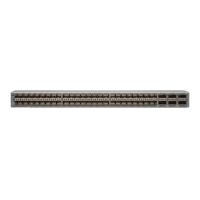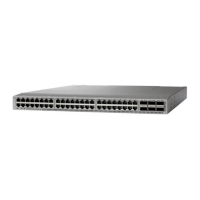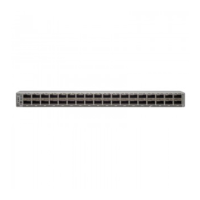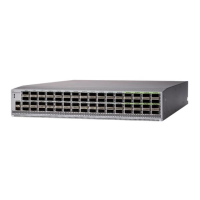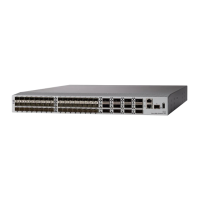Register the new node with the same node name and node ID. This switch becomes part of the fabric. The Cisco APIC
pushes the policies to the new switch and keeps down the vPC legs because there is a mismatch of the generation of
switches. At this point, the vPC primary continues to send the data traffic.
Step 7 Before you proceed to Step 8, on page 42, wait for 10 to 15 minutes for the new switch to download the configurations.
Step 8 From the Cisco APIC GUI, perform the Remove From Controller operation for the vPC primary. The Cisco APIC
clean reboots the switch.
Wait for about 10 minutes for this operation to finish. The vPC leg on the second generation switch, which the Cisco
APIC kept down earlier, comes up. This action prompts all traffic to move to the new second generation switch. The
vPC ports on the new second generation switch can take a few minutes to come up, during which time there will be
traffic drops. The duration of traffic drops varies by the scale and flows in the fabric.
Step 9 Disconnect the cabling from the first generation switch.
Step 10 Uninstall the first generation switch as you did in Step 3, on page 41.
Step 11 Install the second generation switch as you did in Step 4, on page 41.
Step 12 Connect the loose cabling as you did in Step 5, on page 41.
Step 13 Register the new second generation switch with the Cisco APIC.
Register the new node with the same node name and node ID. This switch becomes part of the fabric. The Cisco APIC
pushes policies to the new switch and the vPC legs comes up and starts passing traffic.
Setting Up an Optional Console Interface
You can optionally set up a console interface for performing the initial configuration of the switch. To do
this, use the interface cable provided in the accessory kit to connect the switch to your console device. You
can connect the console port on the switch to a modem. If you do not connect it to a modem, make the
connection either before powering up the switch or after completing the boot process for the switch.
Before you begin
The console device must support VT100 terminal emulations and asynchronous transmissions.
Step 1 Configure the terminal emulator program to match each of the following default port characteristics:
• 9600 baud
• 8 data bits
• 1 stop bit
• No parity
Step 2 Insert the RJ-45 connector on the interface cable found in the accessory kit into the RS-232 port on the switch and insert
the DB-9 connector on the other end of the cable to the serial port on the console device.
Cisco Nexus 93180YC-FX3 ACI-Mode Switch Hardware Installation Guide
42
Connecting the Switch to the ACI Fabric
Setting Up an Optional Console Interface
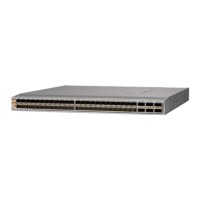
